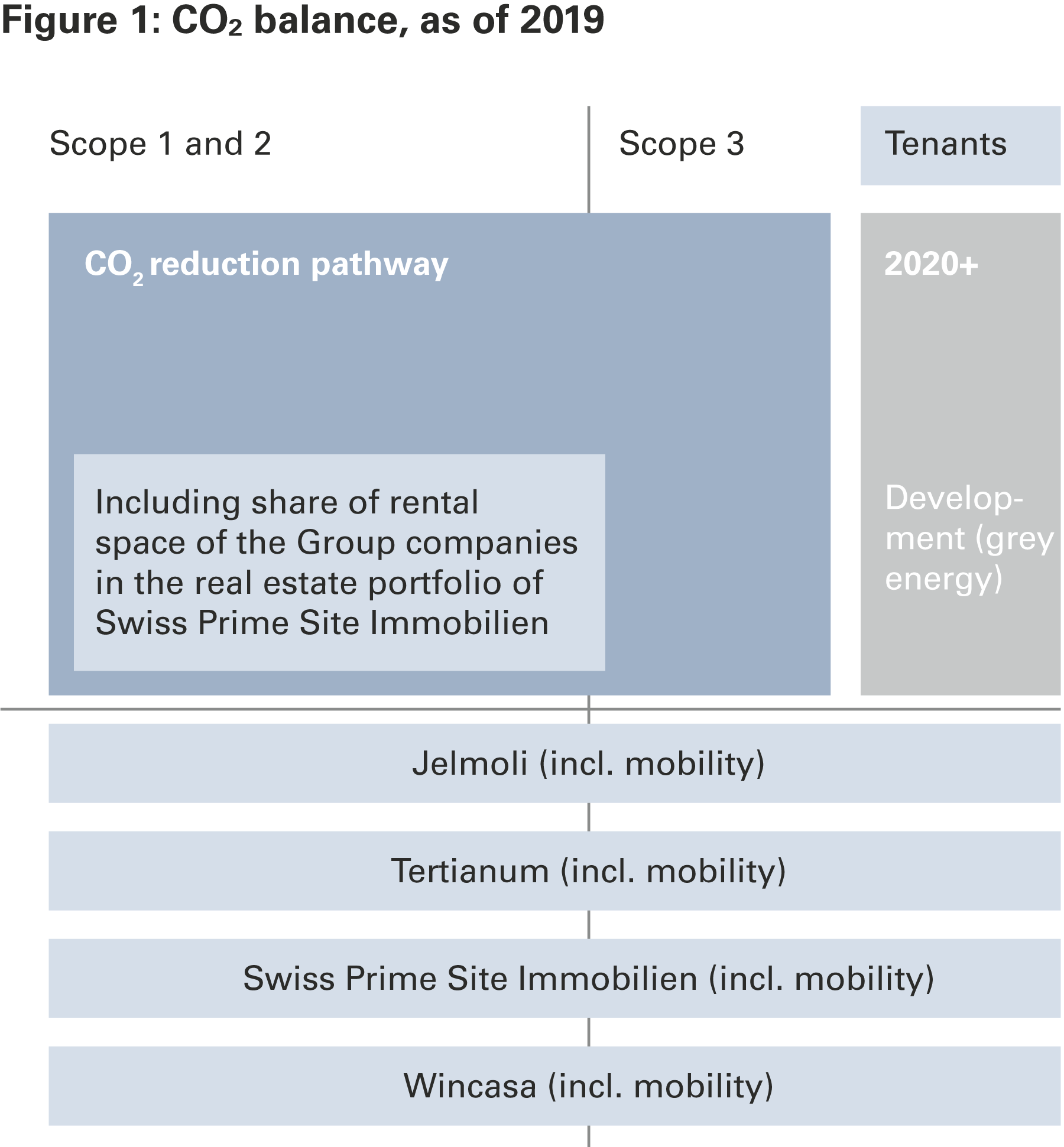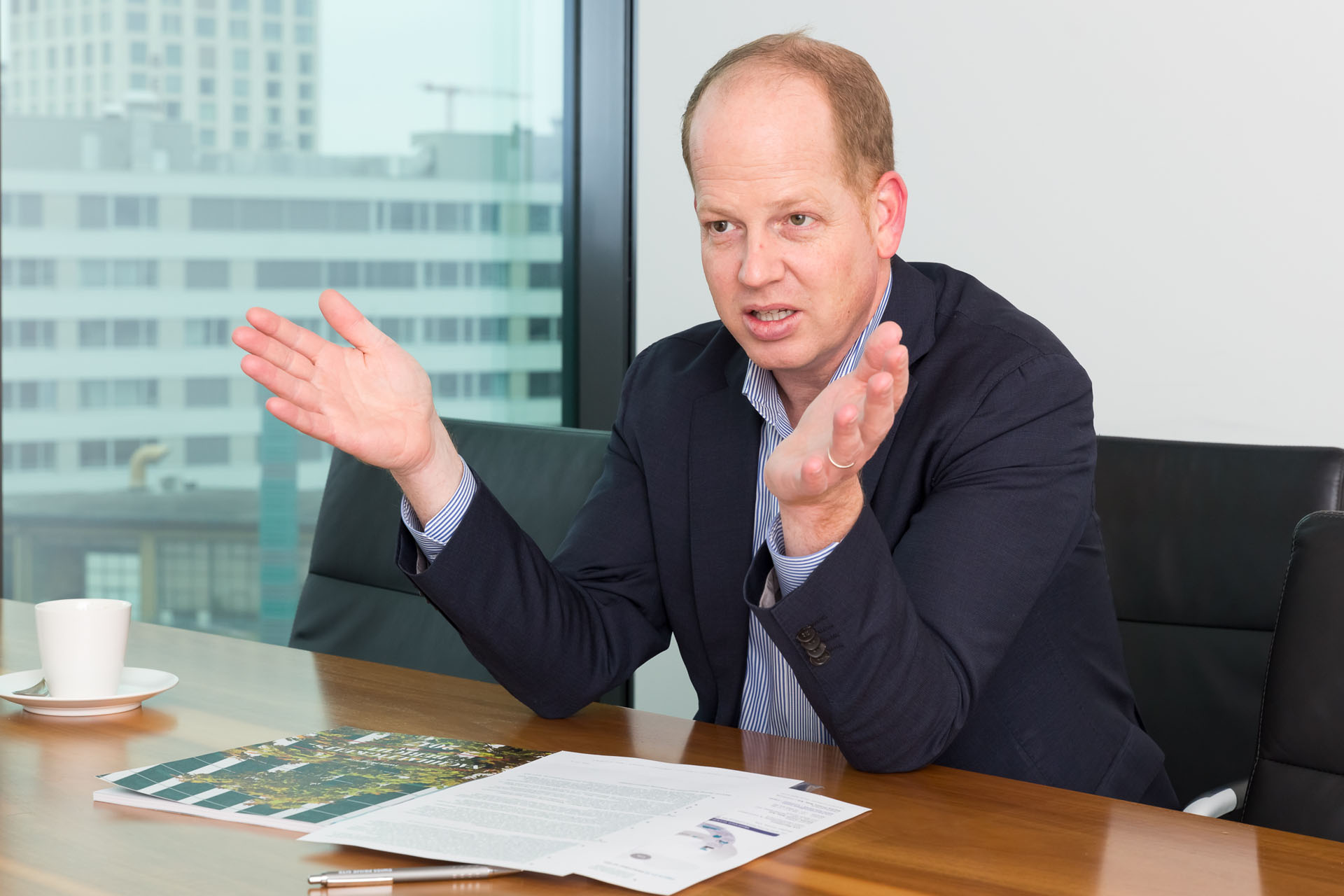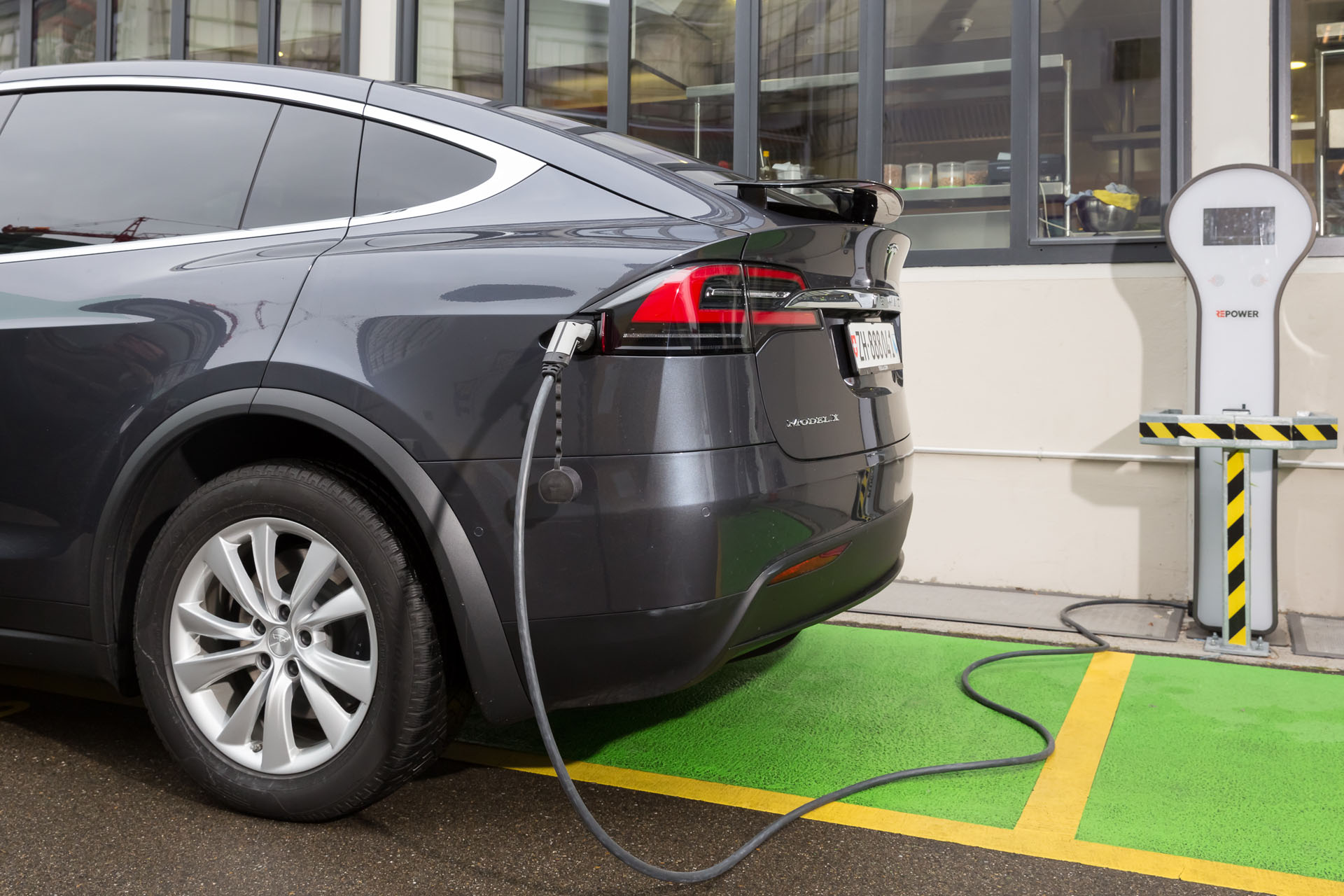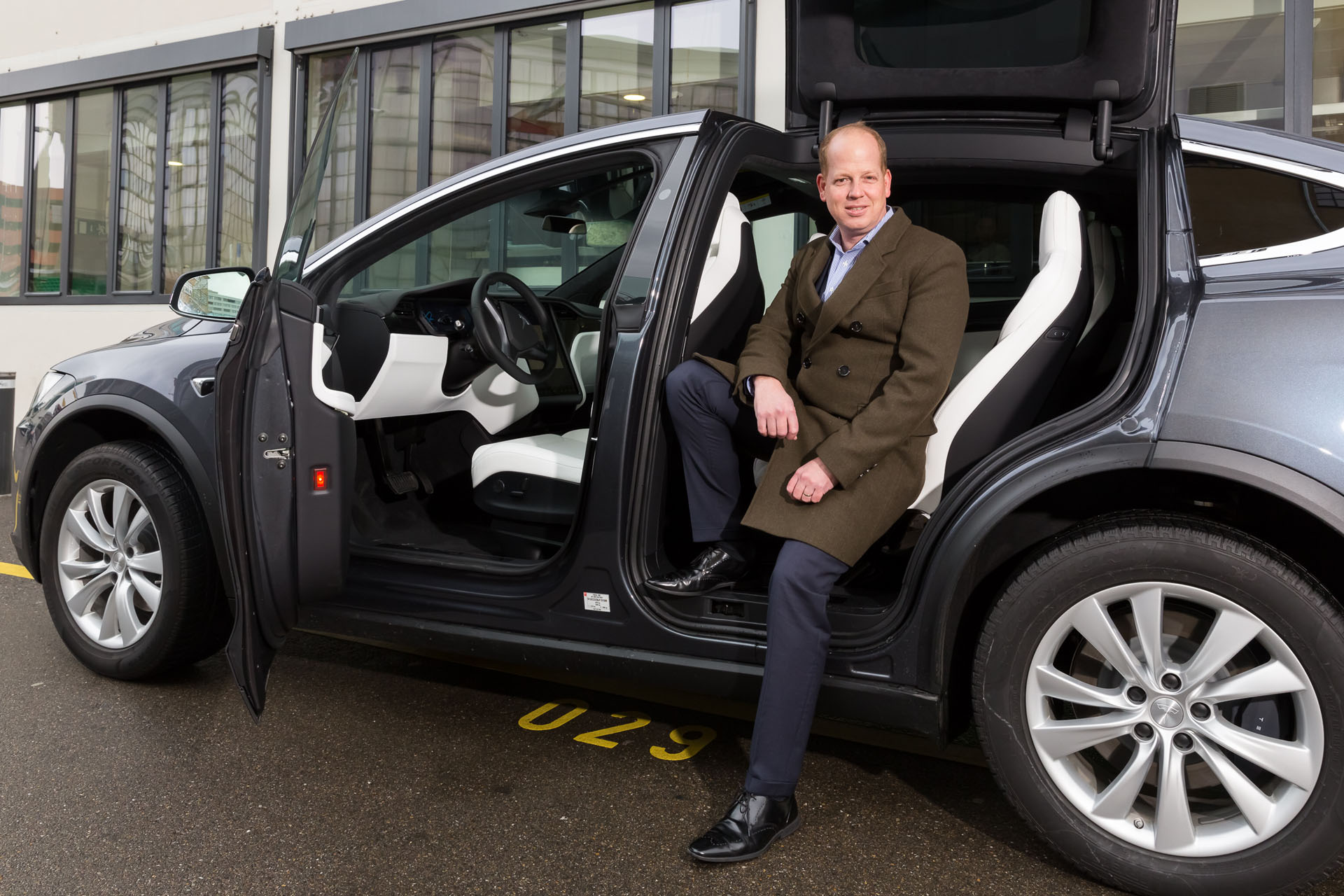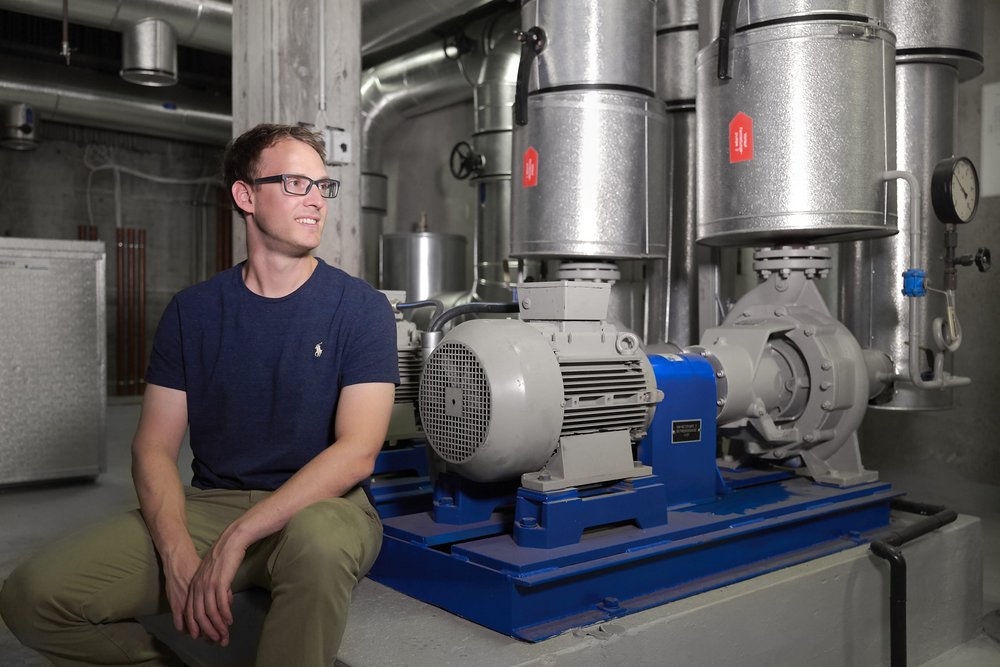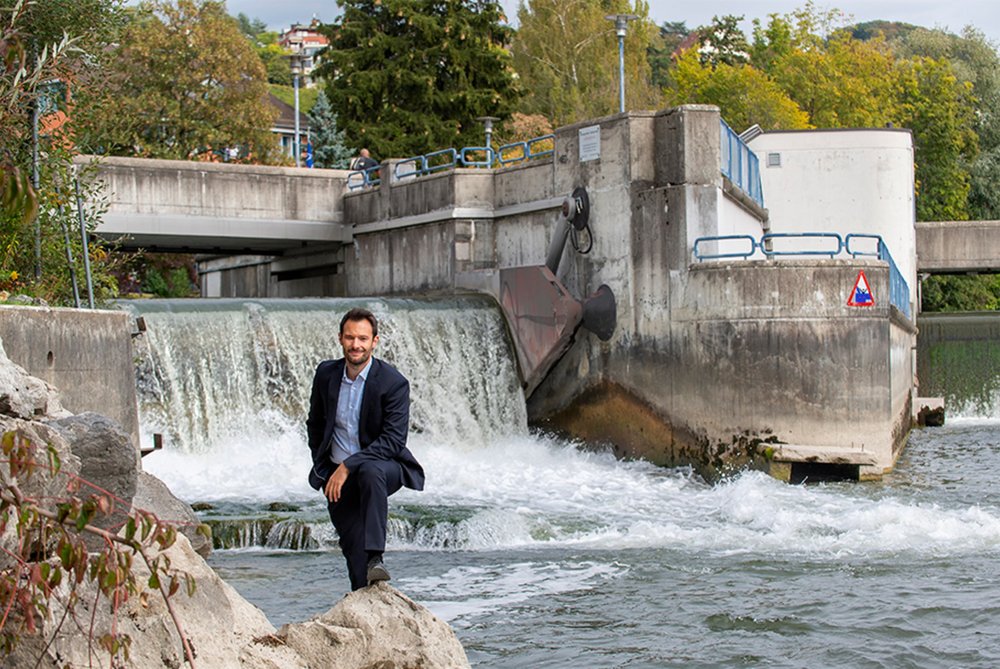Story Detail
The integrated approach to sustainability
Urs Baumann, who is in charge of sustainability and innovation for the entire Swiss Prime Site group, met up with us at a charging station for electric vehicles in front of the Prime Tower. The station typifies the company’s integrated approach, which is based on a CO2 balance sheet concept. The stated objective of Swiss Prime Site is to measure both direct consumption and its indirect CO2 footprint and to continuously reduce it. The biggest challenge here is in determining and reducing the emissions that fall into the «Scope 3» category, because they affect the whole life cycle of a property, including its construction and the operational phase.
Urs Baumann, how can both direct and indirect greenhouse gas emissions be measured?
First of all, you have to make a distinction between the emissions produced by the group itself and those from its property portfolio. While it’s relatively simple for us to measure direct consumption within the company, a large portion of consumption is indirect and beyond our control. The technical terms for this are «Scope 2» and «Scope 3» greenhouse gases, which can be measured in the upstream supply chains. Then you have «Scope 3» greenhouse gases, which are emitted in the downstream activities.
Which emissions can be attributed to Swiss Prime Site?
We differentiate between direct and indirect emissions. Direct, or «Scope 1», emissions include emissions from facilities over which the various group companies have control, such as from the heating systems. «Scope 2» emissions are created during the production of electricity and district heating from purchased energy. While these emissions are indirect, we do still have some control over them. If we take Jelmoli as an example, the emissions it indirectly produces include emissions associated with the delivery of goods by a logistics provider. These indirect «Scope 3» emissions in the supply chain are usually relatively complex to determine and estimate based on specific types of data collection and benchmarking. Other «Scope 3» emissions typical of companies on the supplier side occur during the construction of properties due to the production and transport of concrete or steel, for example.
And once construction of a property is complete...
...then there are both direct and indirect emissions. What is striking is that the latter occur outside the scope of the company and can appear to be beyond our control. However, in our experience, the environmental footprint associated with purchasing electricity can certainly be improved by changing from coal-powered energy suppliers to hydropower. We have much less influence over our tenants, who also contribute to the indirect carbon footprint of the relevant property. How much paper is consumed? Which devices are procured? And last but not least, do employees travel to work by car – and are their cars electric? So, an electric vehicle charging station at the workplace can be seen as another indirect way to affect the mobility habits of tenants and users of the property.
In general, it could be said that the majority of energy lost from properties is lost through operations, with tenants’ habits and management largely determining the footprint. The corresponding CO2 key figures are recorded systematically. By doing this, Swiss Prime Site is aligning itself with its group company Wincasa, which is carrying out a project based on the Greenhouse Gas Protocol (GHG Protocol), a common accounting standard for greenhouse gas emissions.
What is the impact of such a comprehensive CO2 accounting method?
I think the current discussions surrounding stricter CO2 legislation testify to its fundamental importance. As a frame of reference, Switzerland’s direct emissions make up barely half of our actual ecological footprint, because Switzerland imports countless goods and services, and these must always be accounted for in the overall analysis.
This is why we believe it is our duty to extend our carbon accounting beyond the immediate scope of the company and, of course, national borders as well. In addition to being aware of actual total consumption, we can first define reasonable reduction targets, take specific measures, and gauge their impact based on the aforementioned factors. At the same time, it is crucial to exert control even beyond certain boundaries of the system.
The integrated approach has to include more than just adhering to sustainability standards when constructing new properties. For this reason, we are also setting our sights on the entire portfolio – i.e. existing properties and the services that need to be provided – and taking all possible measures to successively reduce CO2 emissions.
What is the specific goal of this comprehensive approach?
We want to do our part to help achieve the urgently needed reduction in greenhouse gas emissions. Based on a portfolio review, which excludes emissions from the group companies, we are working on a reduction path to reach a specific goal that is in line with international climate policy and aimed at a maximum tolerable global warming of 2°C.
However, since there is currently no guarantee that we can even get close to meeting global, industry-specific emission limits, or that these would even prevent the further predicted temperature increase, we must take additional measures. Firstly, these involve prudent and sustainable project planning for future investments. Secondly, we are evaluating and optimising our existing properties and range of services based on their specific consumption figures with respect to their resilience to the negative effects of climate change. In this way, we are ensuring the sustainability of Swiss Prime Site’s business operations.
Is the charging station for electric vehicles part of a range of services that will be expanded further in the future?
If we are to work consistently towards meeting the two-degree target, we will have to employ every option at our disposal. Promoting electromobility stands out as one of the most promising measures for improving our overall balance. At present, the market share of new passenger vehicles in energy efficiency class A is barely 5%. This is because many people are still opting not to purchase electric cars due to the inadequate charging infrastructure.
In this regard, as a real estate company, and in cooperation with its group company Wincasa, Swiss Prime Site can actively support Switzerland’s federal roadmap for promoting electromobility. Last year, for example, we installed a dozen e-charging stations at our sites. In 2019, we will continue to expand the e-mobility infrastructure. And in the future, we may even use it to develop a new business model.
Urs Baumann knows how complex the task will be – and how necessary it is. «We are already doing things that will soon be required by law,» he explains at the end of the interview. «And society is increasingly interested in knowing about the sustainably of a company’s operations. We want to be prepared for the future and be able to provide answers to these questions now.»
![[Translate to Englisch:] [Translate to Englisch:]](/fileadmin/_processed_/2/b/csm_CO2-Kennzahlen_11_685391db93.jpg)
[Translate to Englisch:]
